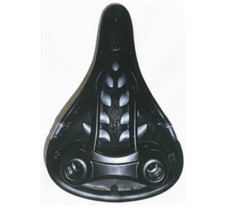Design protection in the EU is granted for the appearance of the whole or a part of a product, as set out the Design Directive.
In the case of component parts of complex products, design protection will only be available for such a component part where (provided it also meets the requirements of novelty and individual character), once incorporated into the complex product, the component part remains visible during normal use of the product. The Design Directive goes to provide that "normal use" means use by the end user, excluding maintenance, servicing or repair work.
The interpretation of the requirements of visibility and what "normal use" includes has presented challenges which were considered in the preliminary ruling of the European Court of Justice (CJEU) on a referral from a German court in Monz Handelsgesellschaft International Case C-472/21.
The CJEU has taken a broad view on what constitutes "normal use", concluding that "normal use" can include, for example, storage and transportation of that product as it includes acts performed during the principal use of a complex product, as well as acts which must customarily be carried out by the end user in connection with such use (other than maintenance, servicing and repair). The perspective of an external observer will also need to be factored in when assessing visibility.
Background
Monz owns a German design registered for 'saddles for bicycles or motorbikes'. The design incorporates a single representation showing the underside of a bicycle saddle.

Büchel, a German company, filed an application for a declaration of invalidity of the registered design with the German Patent and Trade Mark Office (DPMA), claiming that it could not be protected as the underside of the saddle was not visible during normal use. The DPMA rejected the invalidity application, but it was accepted by the Bundespatentgericht (Federal Patent Court, Germany) which declared the design invalid.
The German Federal Patent Court took the view that a bicycle is a complex product, and the saddle is a component part of that product. It found it necessary that the component part remains visible after it has been incorporated into the complex product. According to the Court, only the act of riding a bicycle, including getting on and off, would amount to 'normal use'. During such use, the underside of the saddle is not visible either to the end user or to a third party.
Monz appealed decision to the Bundesgerichtshof (Federal Court of Justice, Germany), which stayed the proceedings and referred to the CJEU for a preliminary ruling.
CJEU Decision
The CJEU's interpretation was that the "visibility" requirement for component parts of complex products must be assessed in relation to practical use. The component part of the complex product had to be visible to the end user, or to an external observer, during ‘normal use’. However, a component part did not need to remain fully visible for the whole duration of which the complex product was being used.
When assessing the visibility of a component part of a complex product during its "normal use" by the end user, the perspective of an external observer should therefore be considered in addition to that of the user.
"Normal use" covers acts performed during the principal use of the complex product, in addition to acts customarily carried out by the end user in connection with such use, with the exception of maintenance, servicing and repair work. The CJEU noted that this included acts which might be performed before or after the product had fulfilled its principal function and could, for example, include storage and transportation of that product.
Concluding thoughts
The CJEU's interpretation of what amount to being visible in normal use is a broad one, and will (depending upon the design in question) potentially see a broader range of component parts protectable. However, the German Court will now need to assess whether during transportation or storage, for example, the underside of the saddle is visible to users, or third party external observers.